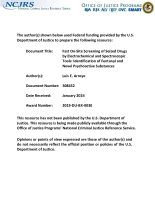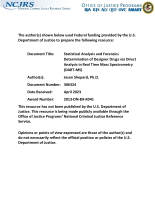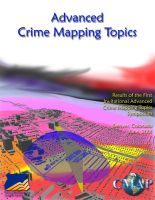Paper analysis
Point Process Modeling with Spatiotemporal Covariates for Predicting Crime
Longitudinal Analysis of Neighborhood Delinquency Rates
Correcting Sample Selection Bias for Bivariate Logistic Distribution of Disturbances
The Development of Two Fast Genotyping Assays for the Differentiation of Hemp from Marijuana
The Inventory of Callous-Unemotional Traits (ICU) Self-Report Version: Factor Structure, Measurement Invariance, and Predictive Validity in Justice-Involved Male Adolescents
Fast On-site Screening of Seized Drugs by Electrochemical and Spectroscopic Tools: Identification of Fentanyl and Novel Psychoactive Substances
Forensic Science (2011)
‘Micro-Cultures’ of Conflict: Couple-Level Perspectives on Intimate Partner Violence in Young Adulthood
Statistical Analysis and Forensics Determination of Designer Drugs via Direct Analysis in Real Time Mass Spectrometry (DART-MS)
Fundamental Study of Porcine Drip Bloodstains on Fabrics: Blood Droplet Impact and Wicking Dynamics
Advanced Crime Mapping Topics
Analysis of Writing Inks on Paper Using Direct Analysis in Real Time Mass Spectrometry
Micro-spectrochemical analysis of document paper and gel inks by laser ablation inductively coupled plasma mass spectrometry and laser induced breakdown spectroscopy
Using Sesame Seed Oil to Preserve and Preconcentrate Cannabinoids for Paper Spray Mass Spectrometry
Expanding Research to Examine the Impacts of Forensic Science on the Criminal Justice System
In 2004, the National Institute of Justice created the social science research on forensic sciences (SSRFS) research program to explore the impact of forensic sciences on the criminal justice system and the administration of justice. Much of the early research from the SSRFS program focused on DNA processing and the use of DNA in investigations and prosecutions.
See the YouTube Terms of Service and Google Privacy Policy





